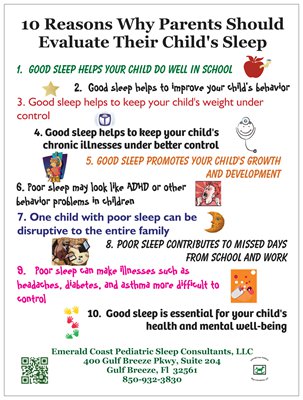
There’s a (4-Legged) Pig in My Bed!
This is my dog, Cabernet. She is a wonderful mutt that we picked up at the local flea market. She was six weeks old and all of her brothers and sisters had been sold already. She was on the discount table and looked so pitiful that we had to bring her home! Lucky for all of us, she is the most wonderful, happy dog in the world. You can tell that by the smile on her face in the picture! I had her DNA tested and it came back “inconclusive” (how insulting!). But she clearly has a lot of beagle in her genetic line, so I list her breed as “beaglelicious”!
I do have a point, other than to show off my baby! The point is, Cabbie snores. We rode out hurricane Ivan together and my relatives made a point of telling me that Cabbie and I missed part of the excitement because we were both laying on the floor next to each other snoring as the wind roared outside. Over the years, I have learned that the art of sleep medicine is in the details. Obtaining a good pet history may provide additional insight into your patients’ sleep disturbances.
I will never forget a patient that I had several years ago that had headaches and problems sleeping. I asked all of the typical questions about her sleep hygiene and habits but nothing stood out, until my patient volunteered, “I think it’s my pig”. I looked up from my computer and asked her to repeat what she had said. She said again, “I think it’s my pig”. She then proceeded to take out her cell phone and show me a picture of her pet potbelly pig. My patient’s pig wasn’t exactly Wilbur-sized, but was almost as big as she was! It turns out that the pig slept in the bed with her and the pig kept her up all night by kicking her in his sleep. My patient’s pig had periodic limb movements! My solution for her sleep disturbance was a pigectomy.
Snoring dogs and kicking pigs are just a few of the pet-related issues that may interfere with your patient’s sleep. How many of you have cats that love nothing more than to walk across your face as you lay in bed? And if you think hamster wheels are annoying during the day, try listening to them at 2:00 in the morning. Birds chirp sometimes even with the cage covered. Fish tanks, while wonderful to look at, can provide enough of a glow in the bedroom to disrupt sleep. Also, consider the neighbor’s barking dog and the rooster that crows in the middle of the night (circadian rhythm disturbance?). Asking about pets can also give clues to potential sources of allergens that may also cause symptoms that interfere with sleep.
Obtaining a good pet history is an important part of the patient interview. Our pets are part of our families and should be included as part of the environmental assessment. By asking about the pig in the bed, you will be able to provide a more comprehensive plan of treatment for your patient.
It’s Never a Dull Moment in a Sleep Clinic!
July was an interesting month in the sleep clinic. More referrals are coming in and the patients are becoming a bit more complicated. Managing behavioral sleep problems and combating insomnia is never dull. A “one size fits all” approach never works, as each family – and each patient – is unique. So, the sleep clinician has to have an arsenal of interventions at the ready.
I was recently challenged to provide a sleep training consultation for a family of three year old twin girls. Most of the research I came across for sleep training twins is geared toward infants. There is not much out there for older children! I was given some wonderful advice by a colleague to train one at a time. That advice, along with several techniques (Bedtime Fading, Good Morning Light, reward systems, etc.) helped me to put together a plan for the family that seems to have a good chance of being successful. I would like to thank Dr. Craig Canapari for his sage advice. Also, I would like to give a huge shout out to Lisa Meltzer and Valerie Crabtree for their text “Pediatric Sleep Problems: A Clinician’s Guide to Behavioral Interventions”.
The upshot of this post is that a good sleep clinician looks to, and utilizes, multiple resources when putting together individualized plans of care. The pediatric sleep community is relatively small, so sharing resources that work and making good contacts is essential. I hope my experiences can serve to help others as I have been helped. Happy napping!
Sleep Education is Not for the Faint of Heart!
This was a pretty busy clinic week for Emerald Coast Sleep. Our numbers are picking up a bit and that’s good. Most people, when they think of a sleep clinic, they think of managing the patient for problems related to a sleep study. Granted, that is a large part of what we do. But the greatest thing that we do, in my humble opinion, is to educate families about “good sleep” and to help them modify poor sleep hygiene behaviors. I have been continuously surprised by the number of people who really don’t know that it is not appropriate for a young child to stay up until midnight or later. Or that the continuously running television or tablet, or laptop (or whatever light emitting device) is contributing to poor sleep behavior. I see why many primary care providers have a difficult time addressing sleep concerns in their office (http://www.apa.org/pi/families/resources/primary-care/sleep.aspx) . Sleep education takes a lot of time and energy. Sleep problems are so multifactorial for many families that a provider has to have a certain level of comfort to be able to tease out the individual problems and address them one by one. I enjoy what I do because the pay off is so great. Children and their caregivers do not need to go through life sleep-deprived. There is help out there.
What a Month!!
I went to the international sleep meeting in Seattle earlier this month and came back really inspired. I went to a lot of sessions on social media and telemedicine. I admit that I am not exactly in love with social media, but I see the necessity of it in today’s world and the value of it when it comes to marketing your business and promoting your ideas. As you can see with this blog, I am slowly getting into the game!
I had the pleasure of participating as a guest blogger on Dr. Scharmaine Lawson-Baker’s site nolathenurse.wordpress.com. It was a great experience and I hope to be able to expand my blogging endeavors over the next several months. Now, if only I can find time to write…!
My business has been in operation for almost a month now. Things are smoothing out and I have a bit of a routine started, so that’s good. I am looking forward to my first telemedicine visit next week with a wonderful family who has offered to be my guinea pig! I hope it will be a rewarding experience for us both, as I would like to incorporate the option of televisits to many more of my patients from distant locations who need follow ups with my clinic. Wish me luck!
The photo above is from my Seattle visit. I had the privilege of visiting the Chihuly Garden and Glass exhibit while I was there. Those of you who know me know that I love all things glass and that I am a fused glass artist in my non-nursing life. The photo was taken inside the “green house” looking up at the Seattle Space Needle outside. Remarkable.
Until next time. Health providers, remember to ask your patients how they are sleeping at night. Parents, turn off those iPads 1-2 hours before bed and help your children to sleep better. Happy napping!
Lazy, Summer Teenage Days
When I was a kid, I looked forward to summer like nothing else! I would sleep until 11:00 am each morning and I LOVED it! Now we know that teenagers are programmed to sleep later in the morning than younger children (OK, maybe not until 11:00!). But the truth is that letting your teen sleep in a bit longer in the mornings actually helps them to achieve good sleep patterns. But sleeping in late does not mean abandoning good sleep practices at night. Keep a good bedtime routine (as much as possible during the busy summer months), set a reasonable bed time, and turn off electronics 1-2 hours before bed. Here’s to those wonderful, lazy summer days!
Countdown
Two weeks and Emerald Coast will be officially up and running. We had our building signage installed today and it makes us look so official! I got back from Boston last week after meeting the staff at Boston Children’s and spending time with the sleep specialist there. I would like to take a moment to thank them again for being so gracious and for taking the time to show me around and educate me about their clinic and lab. It was a wonderful experience and I learned a lot.
One very interesting fact is that there are some common themes with regard to sleep hygiene issues. The first thing is that so many children do not have a set bedtime routine. It seems to be a goal for most families, but life gets in the way and the goal is often lost. Next, so many children are using electronic devices just before bedtime. This is not only for homework purposes. Families often use bedtime as the time to allow children to watch a little television or to have their computer time for the day. Changing those habits will be quite challenging. So much work to do…
Big Dreams
I have believed for quite some time that sleep is one of the most important components of health and wellness. I think it is foundational – if we don’t sleep well, nothing works right. So, I have been on this mission to bring sleep awareness and assessment to the forefront of healthcare for children.
Changing the face of pediatrics is more of a daunting task than one might think! But I know it has to start somewhere, so why not with me? I want my little company to be the impetus to kick-start this campaign. So, in a few days I will be winging my way to Boston to meet with the sleep team at Boston Children’s to pick their brains and see what they are doing right. I hope to bring back some great ideas that will help to elevate the care that Emerald Coast will give to patients. One more brick in the foundation!
Coming Soon!
We have been working diligently to prepare our doors for opening in June. Establishing a new practice as a nurse practitioner in Florida has been quite challenging. There are a lot of specific requirements that have to be met and I am slowly navigating my way through each of them. Blessedly, I have had a lot of really great people who have worked tirelessly along beside me to make this a reality.
So, onward and upward! There is still a lot of work to be done. Despite the sleepless night and the hemorrhaging bank account, I consider it a privilege to have the opportunity to care for one of our most vulnerable populations here on the Florida Panhandle and surrounding areas. Wish us luck!
Welcome to the Sleep For Kids Blog!
I am Sonia Smith – nurse practitioner owner and clinician at Emerald Coast Pediatric Sleep Consultants, LLC. This blog is designed as a somewhat less formal way for me to express my thoughts about pediatric sleep and the challenges of owning a sleep practice. We are due to open our doors to patients on June 1, 2015!









